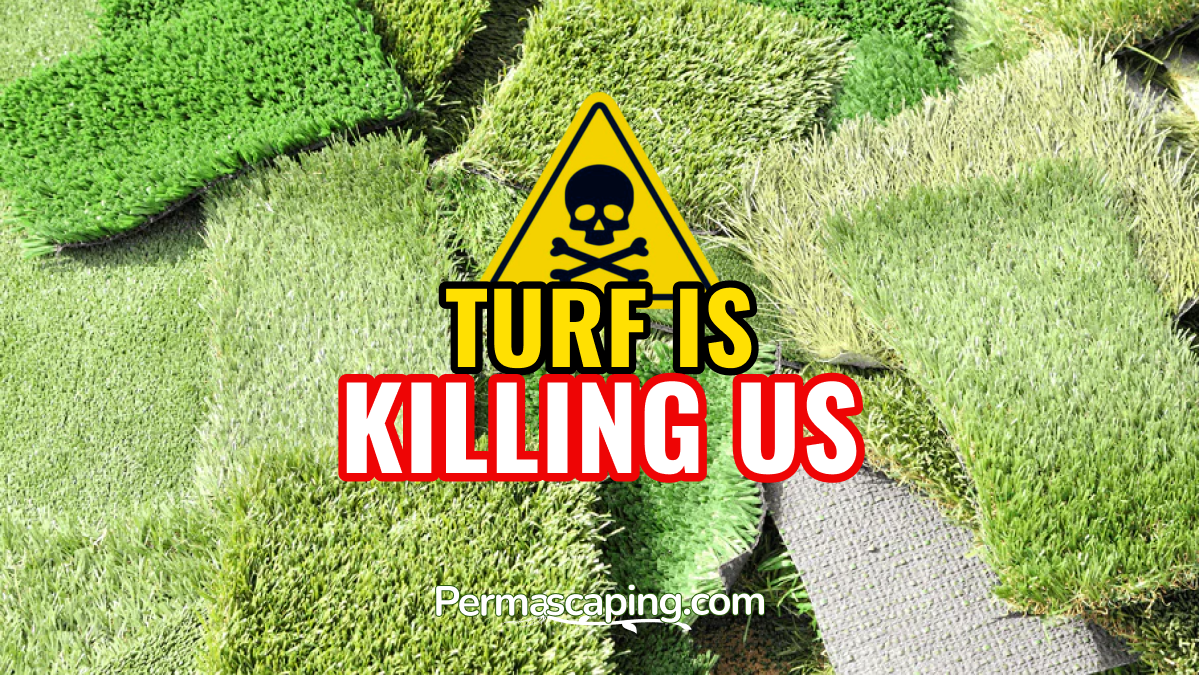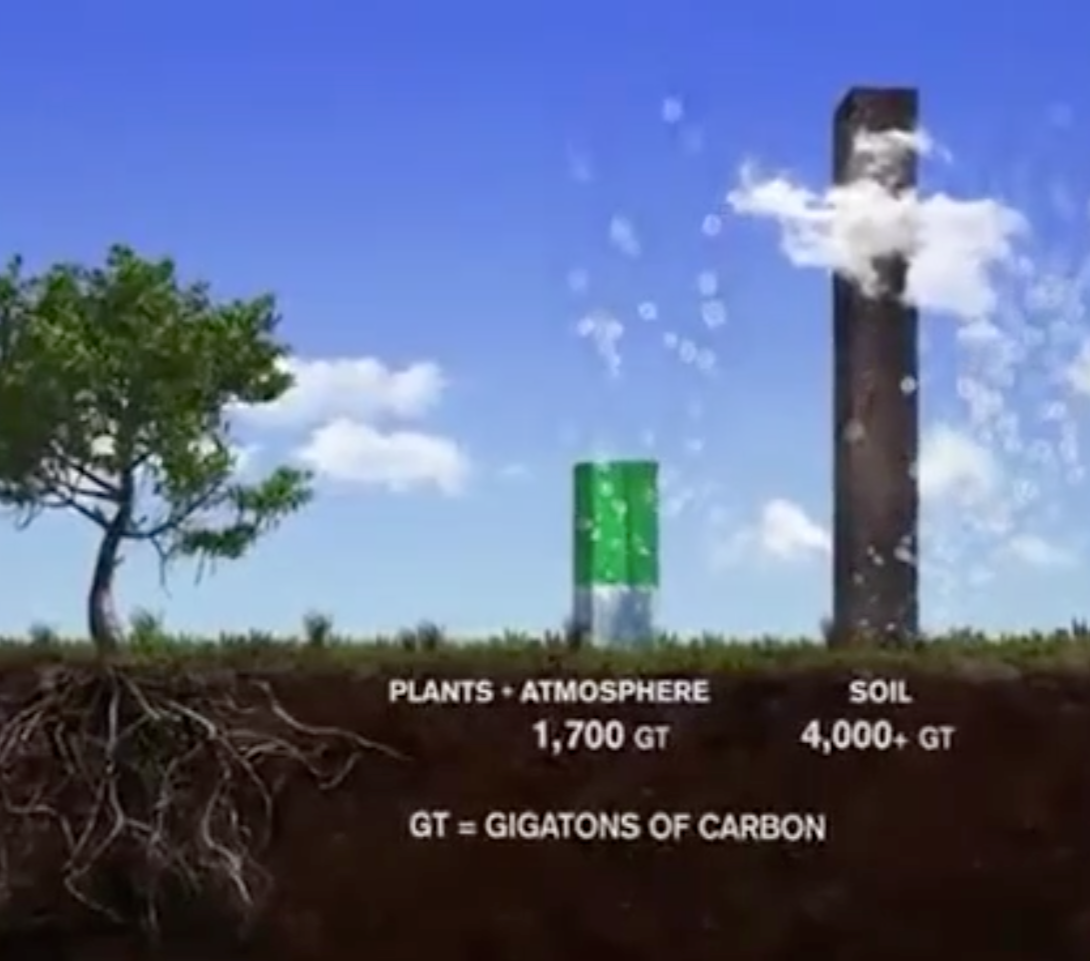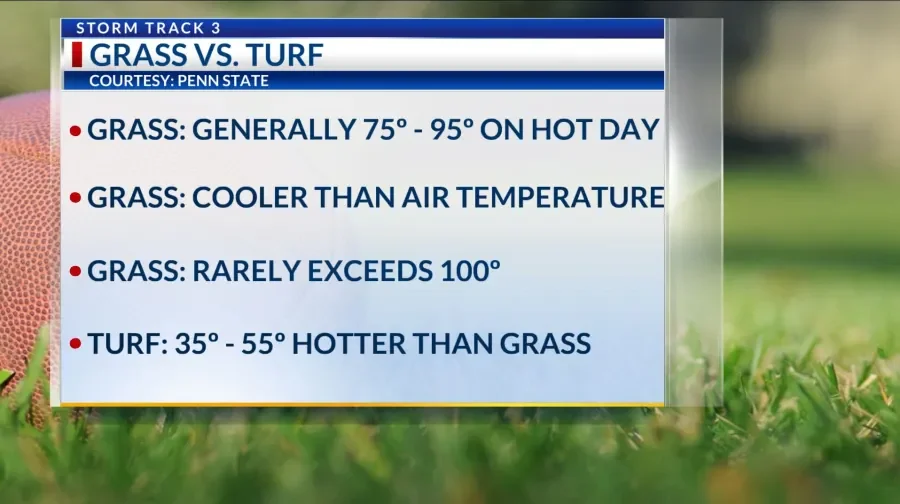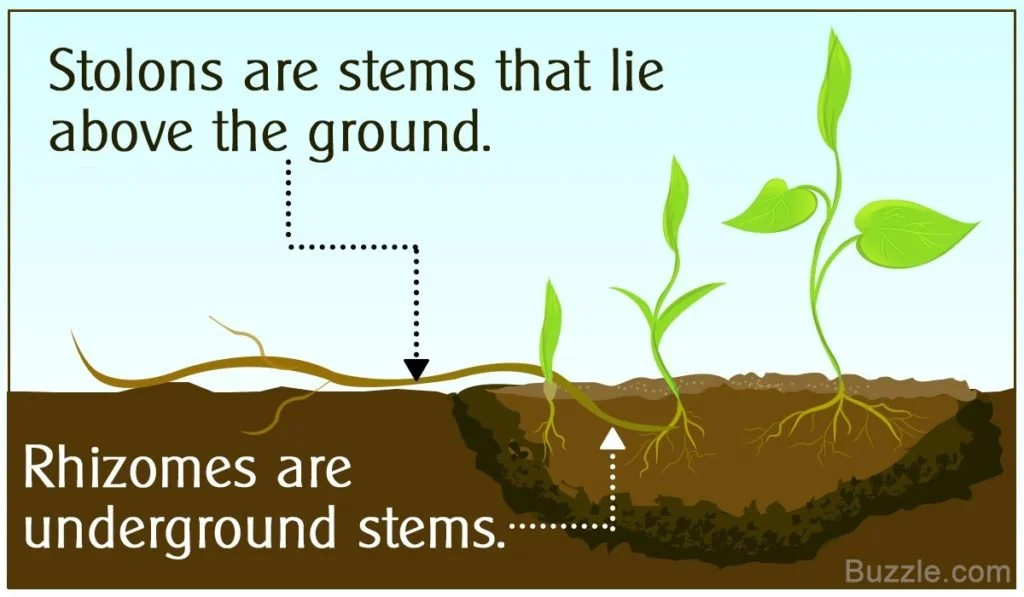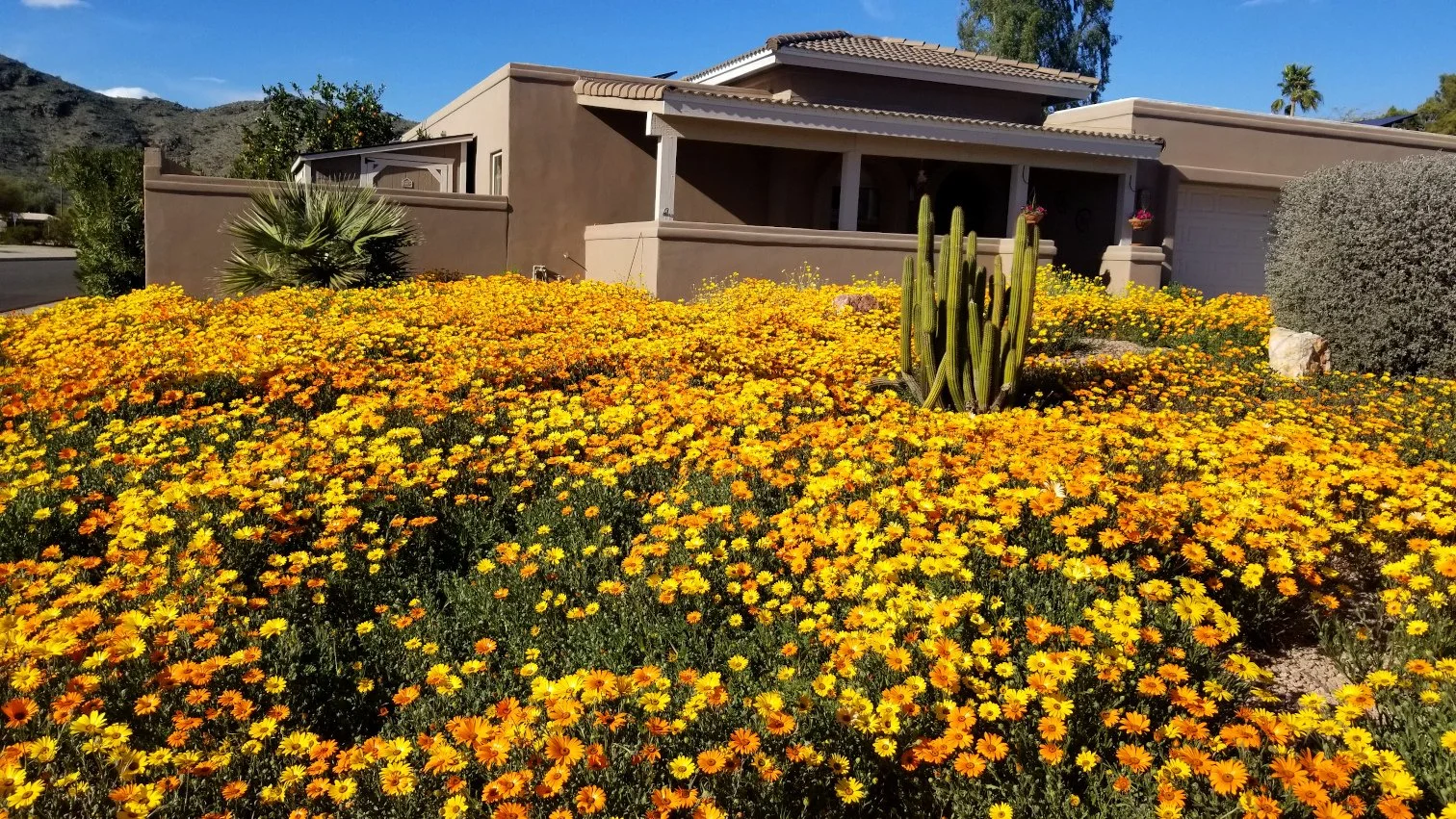The Case Against Fake Turf in 2025
By Jérémy Chevallier
Artificial turf. Synthetic grass. AstroTurf. Fake lawn. It seems like it’s everywhere these days. That’s because an estimated 6,000-8,000 companies are professionally recommending & installing it throughout the United States. You probably have neighbors installing it left and right. And perhaps you’re reading this today because you’re considering it as well. But let me tell you:
Every single turf installation is another big step backward in the urgent global movement to save soil. Here’s why, from industry experts and local customer anecdotes.
4 reasons why we refuse (and often remove) plastic grass
Artificial turf looks green—but it’s anything but. Aside from the fact that it’s a questionable financial decision, more and more homeowners are waking up to the hidden costs of plastic turf. If you're considering synthetic turf for your yard, here’s what you won’t hear from the companies installing it:
Plastic turf is laced with toxic chemicals that leach into your body & nature
There is a huge & continually growing body of evidence for this reality.
PFAS (“forever chemicals”) have been found in turf components like the crumb rubber fill, and even in nearby bodies of water. Skin swabs show elevated PFOS levels in soccer players who played on turf fields and linked them to increased cancer and liver risks.
These chemicals and the heavy metals also being identified in fake grass are known carcinogens and endocrine disruptors that cause immune system suppression, neurotoxicity, and developmental disorders.
(National Center for Health Research, Institute for Exposomic Research, The Guardian, Global Environmental Health Summary, TURI, Clean Water Action, NJIT Department of Chemistry and Environmental Science)
Fake grass creates an ecological dead zone
Before turf is installed the soil underneath has to be heavily compacted, which destroys soil structure and water drainage. But that’s just the beginning of the long-term impacts.
Replacing natural grass with artificial surfaces in parks has been linked to significant declines in bird species diversity. Turf spaces don’t provide any kind of habitat or resources for birds as well as pollinators and other insects beneficial to the soil & overall circle of life.
Did you know healthy topsoil can sequester & store more than double the amount of carbon vs. plants & the atmosphere combined? Slapping fake grass on top of the Earth creates an impenetrable, lifeless barrier that blocks the natural carbon cycle process from occurring in the soil.
Screenshot from Kiss the Ground
Artificial turf gets hotter than asphalt
Turf can reach 160–200°F on sunny days. That’s hotter than blacktop—and enough to burn your kids’ and pets’ feet in seconds. It’s also causing the Phoenix Valley to get even less rain.
The following sources have reported synthetic turf temperatures exceeding 150 °F, with some systems reaching up to 200 °F under sunny conditions.
Outdoor testing in Central PA hit 175 °F, and lab tests (under an infrared lamp simulating sun) recorded highs of 171 °F, 170 °F, etc. A dramatic cooling via irrigation dropped it briefly to 85 °F, but rebounded to 164 °F within 20 minutes. Overall, this product’s performance under real-world conditions supports high peak heat.
(UC ANR, West Coast Turf, Martha’s Vineyard Commission)
Turf isn’t the water-saver they claim it to be
This reason has so many sub-reasons that I’m going to dedicate a whole section to it. In short, you have to clean it (using water much of the time), and it makes everything hotter which requires more irrigation & air conditioning to survive.
Why turf does NOT save water
The major argument in favor of artificial grass is that it saves water. The problem with this argument is that it fails to account for the following auxiliary & long-term factors:
The hotter it gets, the more unpredictable the rain becomes
By now you understand how turf contributes to rising temperatures. But did you know that the hotter the Phoenix Valley gets, the harder it is for us to benefit from rain?
While urban heat islands don’t specifically lower total rainfall, they dramatically change how that rainfall happens. Temperatures surge, evapotranspiration plummets, storms accelerate, and impervious surfaces (like turf and pavement) block infiltration into the earth. This leads to more intense runoff, less groundwater recharge, poorer soil moisture, and overall more stressed water systems. (American Meteorological Society, AGU)
This means the rural communities downwind of Phoenix (east/southeast, like Apache Junction, Gold Canyon, Florence, Superior, Coolidge, San Tan Valley east, etc.), get even bigger dumps with less chance to prepare or protect against them.
All this combined with the hardscape itself means that rainfall is harder to capture, which means you have to use more city water on your plants.
Impermeable surfaces prevent groundwater recharge
Believe it or not, much of the water that goes into our soils sink deep, deep down and actually refill groundwater basins. By preventing proper groundwater recharge we further exacerbate
Bonus reason: Dog poop stinks even worse on turf
Don’t ask me why, but if you know, you know. If I had to guess, I’d say that it’s because there are no soil microbes working to break down the feces, so it just bakes into the plastic.
Natural alternatives to fake grass
Alright so, what’s the solution? What do we do instead of suffocating the earth with artificial turf? I’m so glad you asked, reader. Because we absolutely love educating people on (and installing) the following alternatives:
No-mow, drought-tolerant “Permaculture Lawns”
Kurapia (Lippia nodiflora, AKA frogfruit) is gaining popularity for its characteristics as a grass alternative. It’s super drought tolerant, using only 20-60% as much water as Bermudagrass. That’s 20-60% savings on your water bill every month.
It also spreads horizontally above ground only via stolons (vs. fighting Bermuda popping up everywhere from underground) and never gets higher than a few inches tall, so you don’t have to mow it.
If you’re just not a fan of the Kurapia look, other options like Buffalograss (Bouteloua dactyloides) and Blue Grama (Bouteloua gracilis) will probably give you the look you want, while keeping your water bill down and
We love interplanting red clover (Trifolium pratense) into these lawns because clover has a taproot—which digs tiny channels into the soil, allowing the water to penetrate deeper & feed your lawn longer between irrigation runs.
Native grasses & ground covers
For areas you’re not planning to walk, run, or play in, we can create even more soil & wildlife benefits using sedges (Carex spp), trailing ground covers like Dalea and Myoporum, Verbena, Primroses, daisies, Damianita, and—bonus for human edibles!—herbs like trailing rosemary, creeping thyme, and the mint family.
Major takeaways
I hope this article helps you see why artificial turf (and hardscape in general) is a bad idea and should be used as little as necessary.
One of the things I say all the time, and has become a guiding principle in our nonprofit, is that:
“Mother Nature had her balance figured out long before humans started thinking we were smarter and could do whatever we wanted without consequence.”
The reality is, fake turf kills the soil, makes it hotter, and gives us cancer.
That’s why we won’t install it, and why we’ll even remove it for free when you hire us for a qualifying permaculture landscaping project. If you want that, get started with a free phone consultation at the bottom of the website. At the very least, use this article as righteous ammunition to gently convince your spouse or neighbor that it’s a terrible decision.
Seriously, send this page to someone who has fake turf or is thinking about getting it. You’ll be a hero.

